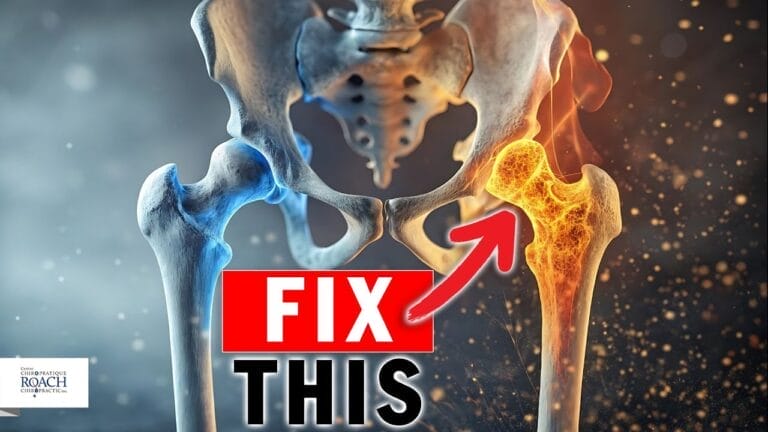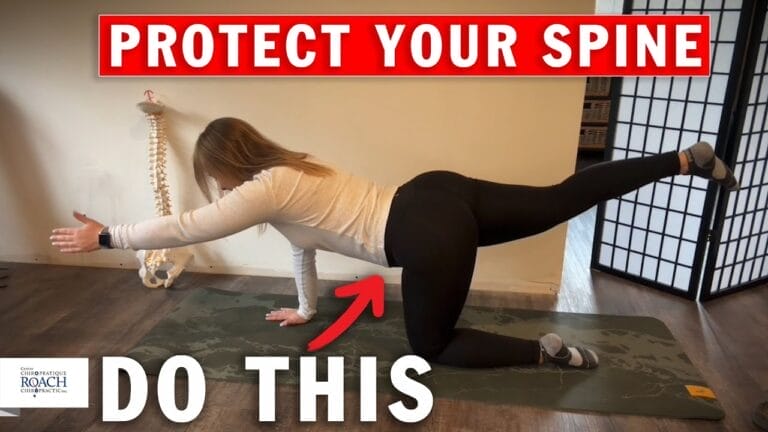Exercises to Maximize your Mid-Back Mobility!
Maintaining mid-back mobility is essential for overall spinal health, posture, and movement efficiency. The thoracic spine, which makes up the mid-back, plays a crucial role in supporting the upper body and facilitating movement. Chiropractic care focuses on improving spinal alignment and mobility, ensuring that the mid-back remains flexible and pain-free. In this blog post, we will explore effective exercises to enhance mid-back mobility, discuss relevant statistics, identify symptoms of restricted mobility, and highlight the importance of ongoing chiropractic care.

Understanding Mid-Back Mobility and Its Impact
The thoracic spine consists of 12 vertebrae and is responsible for rotation, stability, and movement coordination. Poor mobility in this region can lead to discomfort, stiffness, and even compensatory issues in the lower back and neck.
According to Canadian health studies, mid-back pain affects approximately 15% of the population. Globally, research indicates that thoracic spine stiffness is a growing concern due to sedentary lifestyles and prolonged sitting, impacting millions worldwide.
Identifying Symptoms of Restricted Mid-Back Mobility
Common signs of mid-back mobility issues include:
- Stiffness or tightness between the shoulder blades
- Difficulty rotating the torso
- Pain or discomfort when sitting for long periods
- Reduced range of motion in the upper body
Step-by-Step Guide to Improving Mid-Back Mobility
1. Foam Roller Extensions
- Place a foam roller under your mid-back while lying on the floor.
- Support your neck with your hands and gently lean back over the roller.
- Move the roller slightly down to target different areas.
- Repeat for 5–10 repetitions.
2. Cat-Cow Stretch
- Start on all fours with hands under shoulders and knees under hips.
- Inhale, arch your back (Cow Pose), lifting your head and tailbone.
- Exhale, round your back (Cat Pose), tucking your chin and pelvis.
- Perform 10–15 repetitions.
3. Open Book Stretch
- Lie on your side with your top knee bent and arms extended forward.
- Slowly rotate your top arm outward, aiming to touch the floor behind you.
- Hold for 20–30 seconds, repeating 3 times per side.
4. Wall Angels
- Stand against a wall with feet slightly forward.
- Raise your arms to shoulder height, keeping elbows and wrists against the wall.
- Slowly slide your arms up and down, maintaining contact with the wall.
- Perform 10–15 repetitions.
Chiropractic Quote
“Exercises to Maximize Your Mid-Back Mobility! — because a flexible spine is the foundation of a pain-free life.”
Short and Long-Term Benefits
Short-Term Benefits:
- Immediate relief from stiffness
- Improved posture and movement efficiency
- Reduced discomfort in the upper back
Long-Term Benefits:
- Enhanced spinal alignment and flexibility
- Prevention of chronic back issues
- Increased mobility for daily activities
Best Practices & Routines
- Perform mobility exercises daily for optimal results.
- Maintain proper posture while sitting and standing.
- Schedule regular chiropractic adjustments to support spinal health.
Importance of Ongoing Chiropractic Care
Consistent chiropractic care ensures that the thoracic spine remains mobile and properly aligned. Adjustments help reduce stiffness, improve nerve function, and prevent long-term mobility issues. Patients who receive regular chiropractic treatment report significant improvements in posture and overall spinal health.
Trusted Resources for More Information
Take Control of Your Mid-Back Mobility
Your mid-back mobility plays a vital role in your overall well-being. By incorporating these exercises and seeking chiropractic care, you can enhance flexibility, reduce discomfort, and improve posture. Contact Roach Chiropractic today to start your journey toward better spinal health.
SHARE THIS





